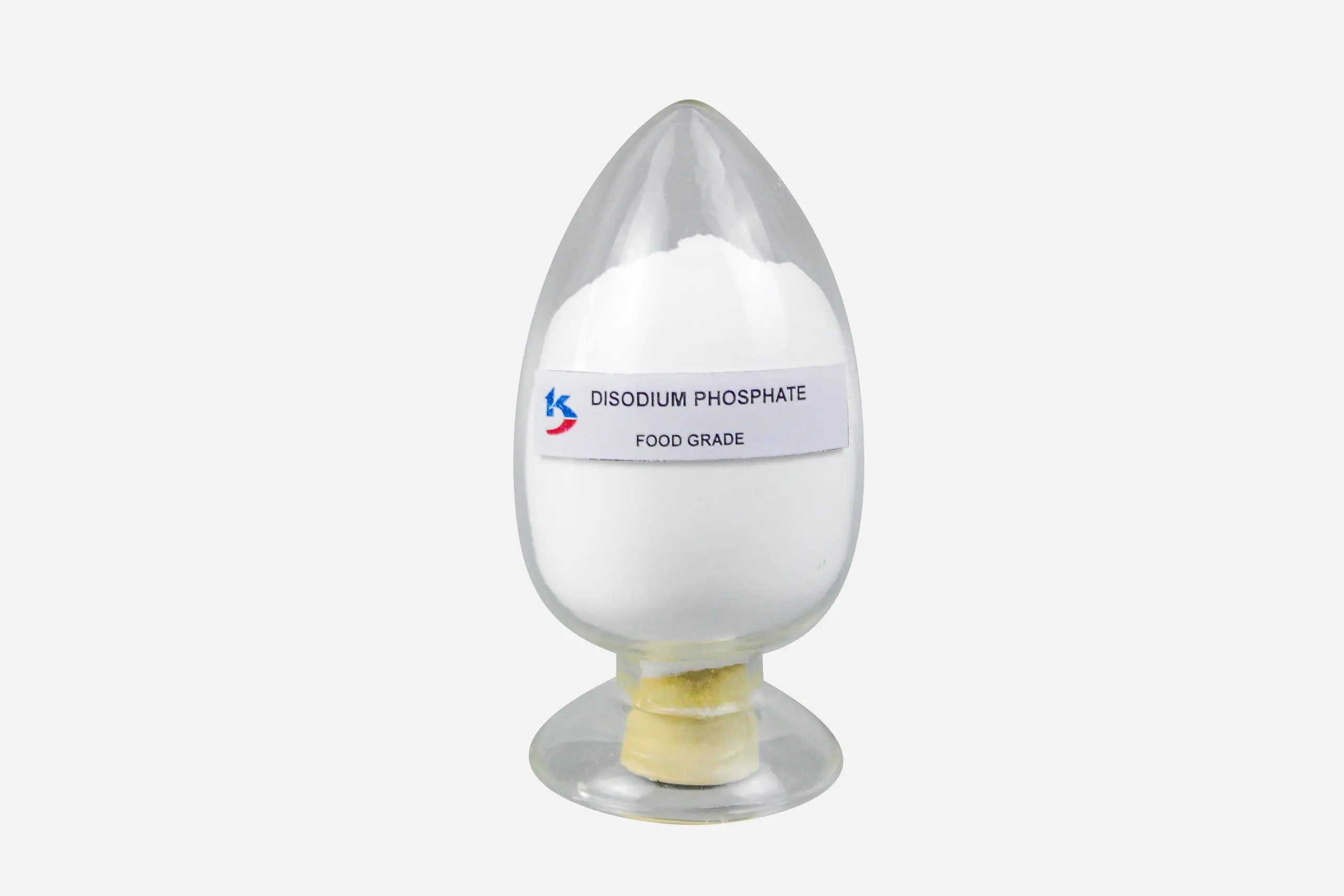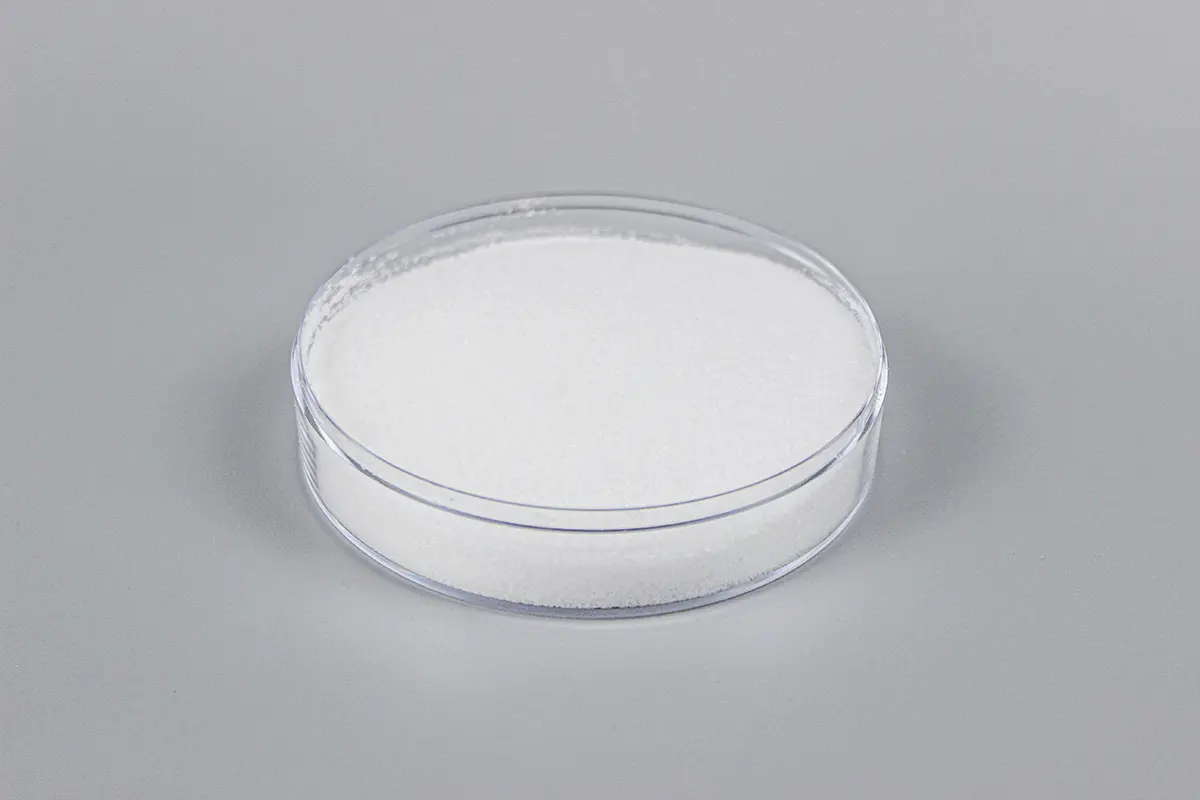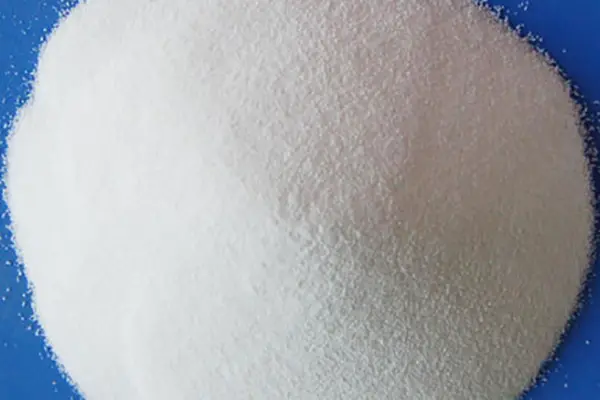Disodium Phosphate Anhydrous, often seen listed as an ingredient in many common food products, is a versatile chemical compound with a wide range of applications. But what exactly is it, and why is it so prevalent, especially in the food industry? This article delves into the world of disodium phosphate anhydrous, exploring its properties, production, various uses (particularly as a food additive), and safety considerations. Whether you’re a procurement professional like Mark Thompson seeking reliable suppliers, a food technologist formulating new products, or simply curious about the ingredients in your pantry, understanding this compound is crucial. We’ll uncover why this specific powder form is valuable and how it functions in everything from processed cheese to detergents. Read on to gain a comprehensive understanding of this important chemical.
What Exactly is Disodium Phosphate Anhydrous?
Disodium phosphate (DSP), also known technically as disodium hydrogen phosphate or sodium phosphate dibasic, is an inorganic compound derived from phosphoric acid. It’s a salt composed of sodium ions (Na+) and hydrogen phosphate ions (HPO4^2-). The term "anhydrous" is critical here – it simply means "without water." While disodium phosphate can exist in hydrated forms (containing water molecules within its crystal structure), the anhydrous version has had this water removed, resulting in a dry powder.
This white, granular or crystalline powder is highly water-soluble but generally insoluble in alcohol. Its chemical formula is Na₂HPO₄. As a type of sodium phosphate, it belongs to a family of compounds widely used across various industries. Understanding its basic chemical nature helps appreciate its functionality, whether it’s acting as a pH buffer, an emulsifier, or a sequestrant in different applications. The product is valued for its consistency and purity, especially in food and pharmaceutical grades.

The specific properties of disodium phosphate anhydrous make it suitable for applications where the presence of water might interfere with a process or formulation, or where a higher concentration of the active compound is desired per unit weight. It’s known for its ability to help regulate acidity and improve texture in various systems.
How is this Versatile Chemical Product Manufactured?
The production of disodium phosphate typically involves reacting phosphoric acid with a sodium-containing base, such as sodium carbonate (soda ash) or sodium hydroxide (caustic soda). The key is to carefully control the reaction conditions, particularly the pH and temperature, to ensure the correct orthophosphate salt is formed. The ratio of the reactants determines which sodium phosphate salt is primarily produced. For disodium phosphate, the reaction aims for a specific pH range.
The general reaction can be represented as:H₃PO₄ + 2 NaOH → Na₂HPO₄ + 2 H₂O
(Phosphoric Acid + Sodium Hydroxide → Disodium Phosphate + Water)
After the reaction, the resulting solution contains dissolved disodium phosphate. To obtain the solid product, the solution is typically purified and then subjected to a drying process. To produce disodium phosphate anhydrous, this drying process is carefully controlled, often involving techniques like spray drying or evaporation under specific temperatures, to remove virtually all the water molecules associated with the hydrated forms. Quality control during manufacturing is paramount, ensuring the final powder meets strict specifications regarding purity, particle size, and residual moisture content, especially for food and pharmaceutical grade material. As manufacturers, we focus intensely on consistency batch after batch.
What are the Key Food Applications for this Product?
Disodium phosphate anhydrous is a workhorse additive in the food industry, approved under regulations like those set by the U.S. Food and Drug Administration (FDA). Its multi-functional nature makes it incredibly useful in a wide array of processed foods. One of its primary roles is as a pH control agent or pH buffer. Maintaining a specific pH level is crucial for controlling microbial growth, enzyme activity, color, and flavor stability in many food products.
Here are some common food applications:
- Processed Cheese: Acts as an emulsifier to prevent oil and water separation, resulting in a smooth, uniform texture.
- Dairy Products: Used in condensed milk, creams, and dairy-based beverages as a stabilizer to prevent protein coagulation and improve texture.
- Baked Goods: Can be used as part of a leavening system in cakes, muffins, and bread to help them rise and achieve the desired texture. It can help control the rate at which leavening gases are released during the bake process.
- Meat and Poultry Products: Helps retain moisture, improve tenderness, and stabilize color in cured meats, sausages, and hams.
- Seafood: Used to maintain moisture and firmness in processed fish and shellfish.
- Cereals: Added to instant cereals and quick-cooking grains to shorten cooking times.
- Beverages: Acts as a buffer to control acidity and enhance flavor profiles.
The use of disodium phosphate anhydrous enhances texture, stability, and shelf life, making it a valuable ingredient for food manufacturers aiming for consistent quality in their product offerings.
Is Disodium Phosphate Anhydrous Used as an Emulsifier and Stabilizer?
Yes, absolutely. One of the most significant roles of disodium phosphate anhydrous in the food industry is its function as both an emulsifier and a stabilizer. Emulsifiers are substances that help mix ingredients that normally don’t mix well, like oil and water. Stabilizers help maintain the consistency and structure of a product over time. DSP excels in both roles, particularly in dairy and processed food systems.
In processed cheese, for example, disodium phosphate interacts with milk proteins (casein), making them more soluble and preventing fat globules from coalescing and separating out. This results in the characteristic smooth, meltable texture consumers expect. It prevents that undesirable grainy texture or oiling off. Similarly, in products like evaporated or condensed milk, it acts as a stabilizer to prevent the milk protein from settling out or gelling during storage or heat treatment, ensuring a longer shelf life and consistent quality.

Its ability to sequester (bind) metal ions also contributes to its stabilizing effect. By binding ions like calcium, which can cause instability or unwanted reactions in some food systems, disodium phosphate anhydrous helps maintain the desired texture, appearance, and overall quality of the food product. This functionality is crucial for creating appealing and stable processed foods.
Can this Product Help Adjust Acidity in Foods?
Indeed, controlling and adjusting acidity (pH) is another critical function of disodium phosphate anhydrous in food processing. It acts as an effective pH buffer, meaning it helps resist changes in pH when small amounts of acid or alkali are added. Maintaining a stable pH is vital for several reasons in food production: controlling the growth of microorganisms, influencing flavor and color, and ensuring the proper function of other ingredients like gelling agents or enzymes.
Disodium phosphate is slightly alkaline in solution (typically having a pH between 8.7 and 9.4 in a 1% solution). This property allows it to be used as a buffering agent to raise the pH (reduce acidity) or maintain it within a specific range. For instance, in certain beverages or canned vegetables, adjusting the pH can prevent unwanted tartness or help preserve color and texture during processing and storage.
This buffering capacity is particularly important in products where fermentation or other chemical reactions might alter the pH over time. By incorporating disodium phosphate anhydrous into the formulation, manufacturers can ensure greater consistency and stability in their final product. It provides a reliable way to manage the chemical environment within the food, contributing significantly to its overall quality and consumer acceptance. Accurate pH control is often a key specification for buyers like Mark Thompson, ensuring the ingredient performs as expected in their own manufacturing processes.
Beyond Food: What Other Industrial Uses Does this Product Have?
While its role in the food industry is significant, the utility of disodium phosphate anhydrous extends to various other industrial sectors. Its chemical properties make it a valuable component in numerous non-food applications, showcasing its versatility as an industrial chemical.
Some notable industrial uses include:
- Detergents and Cleaning Agents: Sodium phosphates, including DSP, were historically used in detergent formulations as water softeners and builders. They sequester calcium and magnesium ions found in hard water, preventing them from interfering with the cleaning action of surfactants. This helps detergents clean more effectively. Although environmental concerns have reduced their use in some regions, they are still found in certain industrial and institutional cleaners.
- Water Treatment: It is employed in water treatment processes, particularly for boiler water treatment. It helps prevent the formation of scale (mineral deposits) on heat transfer surfaces by precipitating calcium salts as a soft sludge, which can be easily removed. It also helps control corrosion within the boiler system. You can learn more about chemicals used in water treatment, such as Ferrous Sulfate.
- Metal Treatment: Used in metal surface treatment and cleaning processes before painting or plating. It can help remove oxides and prepare the surface for subsequent coatings.
- Textile Industry: Utilized in dyeing processes as a buffering agent to control pH, which is crucial for achieving consistent color uptake by fabrics.
- Ceramics and Pigments: Can be used in the manufacturing of certain ceramics and pigments.
- Laboratory Reagent: Employed in chemical laboratories as a buffering agent and reagent in various analytical procedures.
- Pharmaceutical Applications: Used as an excipient (inactive ingredient) in some pharmaceutical formulations, often as a buffering agent in tablets or injectable solutions. It can also be used as a saline laxative in certain medical contexts.
- Personal Care and Cosmetics: Found in some personal care products and cosmetic formulations, again often functioning as a pH adjuster or buffer.
These diverse applications highlight the broad utility of disodium phosphate anhydrous beyond just being a food additive.
What Makes the Anhydrous Form of this Product Unique?
The key difference lies right in the name: "anhydrous" means "without water." While disodium phosphate can exist as hydrates (like disodium phosphate dihydrate, Na₂HPO₄·2H₂O, or heptahydrate, Na₂HPO₄·7H₂O), the anhydrous form (Na₂HPO₄) has had these water molecules removed during the manufacturing process. This distinction offers several practical advantages in certain applications.
- Higher Concentration: Because there’s no bound water, disodium phosphate anhydrous contains a higher percentage of the active Na₂HPO₄ compound by weight compared to its hydrated counterparts. This means you need less product to achieve the same effect, potentially leading to cost savings in formulation and shipping.
- Stability: The anhydrous form can be more stable under certain storage conditions, particularly where fluctuations in humidity might cause hydrated forms to gain or lose water, potentially leading to caking or changes in concentration.
- Formulation Flexibility: In applications where the presence of additional water is undesirable (e.g., in certain powder blends, concentrated solutions, or specific chemical reactions), the anhydrous form is preferred. It prevents the introduction of extra moisture into the system.
- Solubility Characteristics: While both forms are water-soluble, their rates of solubility and behavior under different temperature conditions can vary slightly, which might be relevant in specific processing scenarios.
Choosing between anhydrous and hydrated forms depends entirely on the specific requirements of the application. For many food and industrial uses where precise concentration and minimal moisture are desired, disodium phosphate anhydrous is the preferred product.
How Does this Product Contribute to Water Treatment Processes?
Disodium phosphate anhydrous plays a crucial role in various water treatment applications, primarily aimed at preventing scale formation and controlling corrosion in industrial water systems, especially boilers. Hard water contains dissolved minerals like calcium and magnesium salts. When this water is heated, these minerals can precipitate out and form hard scale on surfaces like pipes and heat exchangers. This scale reduces efficiency and can lead to equipment damage.
DSP helps manage this issue through the following mechanism: It reacts with calcium ions in the boiler water to form calcium phosphate, which precipitates as a soft, non-adherent sludge rather than a hard scale. This sludge remains dispersed in the water and can be easily removed through a process called blowdown. This phosphate treatment program helps keep heat transfer surfaces clean and maintain optimal boiler efficiency.

Furthermore, maintaining a specific alkaline pH range is essential for preventing corrosion of metal components within the boiler system. Disodium phosphate, being alkaline, helps buffer the boiler water, keeping the pH within the desired range (typically 10.5-11.5) to minimize corrosion rates. While often used in conjunction with other chemicals like Trisodium Phosphate for more comprehensive water treatment programs, DSP provides essential scale and corrosion control benefits, protecting valuable industrial equipment. Its use is vital for maintaining the longevity and efficiency of these systems.
Are There Safety and Regulation Considerations for this Product?
Yes, like all chemical substances, especially those used in food and pharmaceutical applications, disodium phosphate anhydrous is subject to safety assessments and regulation. Regulatory bodies worldwide, such as the U.S. Food and Drug Administration (FDA) and the European Food Safety Authority (EFSA), have evaluated sodium phosphates, including DSP.
- Food Safety: When used as a food additive, disodium phosphate is generally recognized as safe (GRAS) by the FDA when used in accordance with good manufacturing practices. This means it’s considered safe for consumption at the levels typically found in foods. Regulations specify the types of foods it can be added to and sometimes the maximum usage levels. It’s listed under E number E339(ii) in Europe.
- Nutritional Considerations: Phosphates are a source of dietary phosphorus, an essential mineral. However, excessive intake of phosphorus, particularly from processed foods containing phosphate additives, relative to calcium intake, is a topic of ongoing discussion in nutritional science. Consumers and health professionals sometimes monitor phosphate intake.
- Industrial Safety: In its concentrated powder form, disodium phosphate anhydrous can be irritating to the eyes, skin, and respiratory tract. Appropriate personal protective equipment (PPE), such as gloves, goggles, and dust masks, should be used when handling the product in industrial settings to minimize exposure. Material Safety Data Sheets (MSDS) provide detailed handling and safety information.
- Compliance: Manufacturers and users must ensure compliance with relevant national and international regulations regarding labeling, purity standards (e.g., Food Chemicals Codex – FCC grade), and permissible uses. For buyers like Mark Thompson, ensuring a supplier meets these regulatory and quality standards (like ISO certifications) is a primary concern.
Overall, when handled correctly and used within established limits, disodium phosphate anhydrous has a strong safety profile backed by regulatory approval for its various applications, including food and feed. Responsible manufacturing and adherence to guidelines ensure the safe use of this versatile compound.
Choosing the Right Disodium Phosphate Product: Key Factors
Selecting the appropriate disodium phosphate product requires careful consideration of the intended application and desired quality attributes. For procurement professionals like Mark Thompson, making the right choice involves balancing quality, cost, and supplier reliability.
Here are key factors to consider:
- Grade: Is Food Grade (FCC), Pharmaceutical Grade (USP/NF), Technical Grade, or Feed Grade required? Purity requirements differ significantly. Food and pharma grades have the strictest specifications.
- Form: Do you need Disodium Phosphate Anhydrous (Na₂HPO₄) or a hydrated form (e.g., Dihydrate, Heptahydrate)? This depends on concentration needs and sensitivity to moisture. The anhydrous form offers higher Na₂HPO₄ content.
- Particle Size: Does the application require a specific particle size (e.g., granular vs. fine powder)? This can affect solubility rate and handling properties.
- Purity and Specifications: Review the Certificate of Analysis (CoA) to ensure the product meets required specifications for purity, heavy metal content, arsenic levels, fluoride, etc. Consistency between batches is crucial.
- Packaging: Is the package size and type suitable for your manufacturing process (e.g., 25kg bags, bulk bags)? Packaging must protect the product from moisture, especially the anhydrous form.
- Supplier Reliability: Does the supplier have robust quality control systems (e.g., ISO certification)? Can they provide consistent supply, reliable logistics, and good communication? Dealing with potential pain points like communication gaps or shipment delays requires a dependable partner.
- Regulatory Compliance: Ensure the product and the supplier meet all relevant federal and local regulations for your industry and region (e.g., FDA, EFSA, RoHS compliance if relevant).
- Technical Support: Does the supplier offer technical support regarding product use and formulation?
By carefully evaluating these factors, buyers can ensure they source a disodium phosphate anhydrous product that meets their technical requirements, quality standards, and production needs effectively and reliably. Making an informed choice helps make the final product successful.
Key Takeaways: Disodium Phosphate Anhydrous
- Definition: Disodium Phosphate Anhydrous (Na₂HPO₄) is the water-free, powder form of sodium phosphate dibasic, a versatile inorganic chemical.
- Key Functions: It acts primarily as a pH buffer, emulsifier, stabilizer, and sequestrant.
- Food Applications: Widely used in processed foods like cheese, dairy products, meats, baked goods, and beverages to control acidity, improve texture, and enhance shelf life.
- Anhydrous Advantage: Offers higher concentration, potentially better stability, and avoids adding extra moisture compared to hydrated forms.
- Industrial Uses: Employed in detergents, water treatment (especially boiler water for scale and corrosion control), metal treatment, textiles, and as a laboratory reagent.
- Safety & Regulation: Generally recognized as safe (GRAS) for food use within specified limits but requires proper handling in industrial settings due to potential irritation. Compliance with regulations (FDA, EFSA, FCC) is essential.
- Selection Criteria: Choosing the right product involves considering grade, form (anhydrous vs. hydrate), purity, particle size, packaging, and supplier reliability.
Disodium phosphate anhydrous remains an indispensable ingredient in modern food processing and various industrial applications due to its unique and valuable functional properties.
Post time: Mar-26-2025










